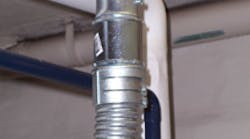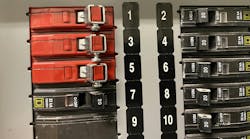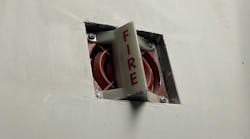How well do you know the Code? Think you can spot violations the original installer either ignored or couldn't identify? Here's your chance to moonlight as an electrical inspector and second-guess someone else's work from the safety of your living room or office. Joe Tedesco, who has a knack for finding shoddy electrical work, did the dirty work and found this mess. Now it's your turn to identify the violation.
Find the Answer
Brian Newland, an electrical engineer in Savannah, Ga., noted that the transition from flexible metal conduit to EMT is prohibited by the Code. “A box or conduit body must be in place to make the transition. Per 300.15, ‘Fittings and connectors shall be used only with the specific wiring methods for which they are designed and listed.’ Also per 358.42, ‘Fittings have been tested for use only with steel EMT unless there is specific marking on the device or carton to indicate the fittings are suitable for use with aluminum or other material.’”
Nicholas S. Mintier, an electrician with Alico Road Aggregate Quarry in Fort Myers, Fla., submitted these comments. “When changing from cable to other raceway wiring methods, …‘a fitting identified for the use’… must be used. Reference 300.15(F).” He noted the one in this photo would loosen over time.
Kathleen McGloin, a Code enthusiast from Boston, added this to the mix. “The installer did not use an electrical box or other listed enclosure to transition from one wiring method to the other. The run is transitioning from flexible metal conduit to non-flexible conduit (at best), or, from armored cable to pipe (at worst). I believe the installation violates the requirements of 300.16(A) and 300.10.”




